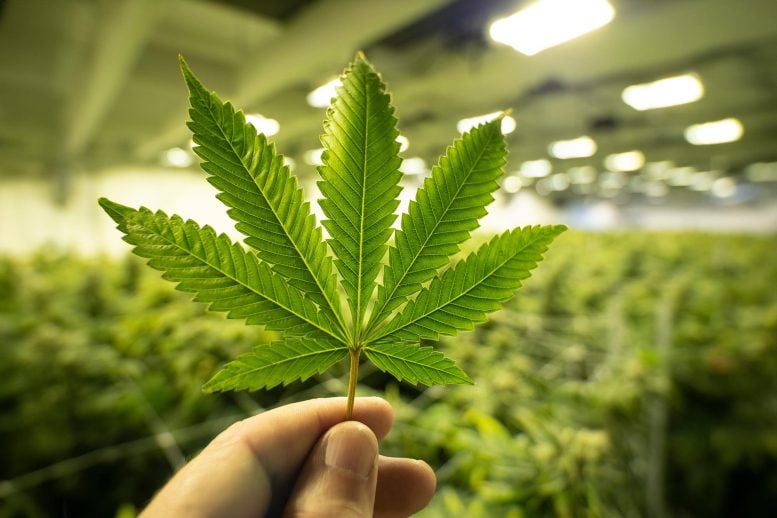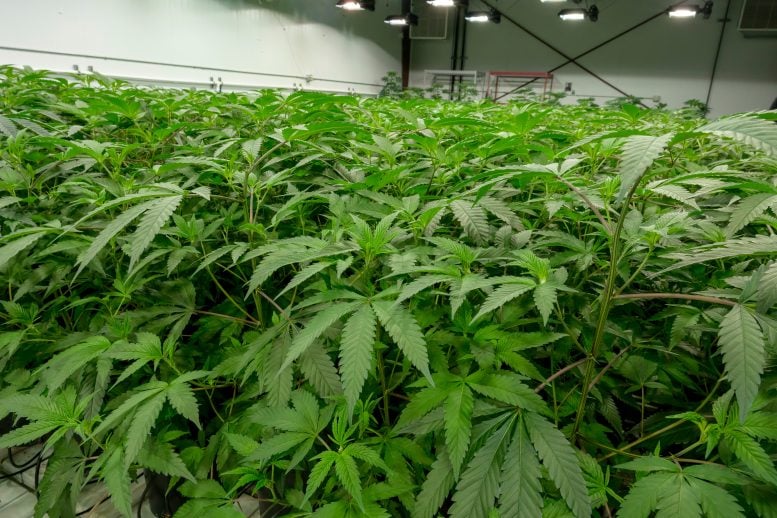
Research from the University of Arizona Health Sciences shows that Cannabis sativa terpenes are as effective as morphine in treating chronic pain and have fewer side effects. When combined with morphine, they provide increased pain relief, presenting a promising alternative to opioids with lower addiction risks. Future studies will focus on potential combination therapies to optimize pain management.
Researchers at the Comprehensive Center for Pain & Addiction conducted tests on five terpenes and found promising results in their pain-relieving abilities.
A University of Arizona Health Sciences study published in the journal PAINdiscovered that terpenes from Cannabis sativa were as effective as morphine in relieving chronic neuropathic pain. Additionally, the combination of these two painkillers improved pain relief without negative side effects.
Some previous studies have shown that the Cannabis sativa plant and its two primaries
” data-gt-translate-attributes=”({“attribute”:”data-cmtooltip”, “format”:”html”})” tabindex=”0″ role=”link”>cannabinoidstetrahydrocannabinol or THC, and
” data-gt-translate-attributes=”({“attribute”:”data-cmtooltip”, “format”:”html”})” tabindex=”0″ role=”link”>cannabidiol, or CBD, may be effective in managing chronic pain; however, the effects are generally mild and may be accompanied by unwanted psychoactive side effects. Terpenes, the compounds that give plants their aroma and taste, offer an alternative route to pain relief without unwanted side effects.
“A question that we are very interested in is: could terpenes be used to manage chronic pain? said lead researcher John Streicher, PhD, a member of the Comprehensive Center for Pain & Addiction and professor of pharmacology at the Tucson School of Medicine. “What we found is that terpenes are really effective in relieving a specific type of chronic pain with low, manageable side effects.”

John Streicher, PhD, is a member of the University of Arizona Health Sciences Comprehensive Center for Pain and Addiction and a professor of pharmacology at the Tucson School of Medicine. Credit: Noelle Haro-Gomez, University of Arizona Health Sciences
Terpene Research
Terpenes are found in all plants, and most plants have two dominant terpenes
” data-gt-translate-attributes=”({“attribute”:”data-cmtooltip”, “format”:”html”})” tabindex=”0″ role=”link”>species. Cannabis is unique in that it contains up to 150 terpenes, with several terpenes acting as dominant species. Streicher and the research team tested five terpenes found in moderate to high levels in Cannabis: alpha-humulene, beta-caryophyllene, beta-pinene, geraniol and linalool.
In an earlier study, Streicher’s team found that four of these terpenes mimic the effects of cannabinoids, including a reduction in pain sensation, in animal models of acute pain. For this study, they used a mouse model of chemotherapy-induced neuropathic pain, a type of chronic pain that occurs when highly toxic chemotherapy drugs cause nerve damage that leads to pain.

Cannabis sativa is unique in that it contains up to 150 terpenes, with several terpenes acting as the dominant species. Credit: Noelle Haro-Gomez, University of Arizona Health Sciences
Terpenes were tested individually and compared to morphine. The research team found that each terpene was successful in reducing the sensation of pain to levels near or above the peak effect of morphine. When terpenes were combined with morphine, the analgesic effects of all five terpene/morphine combinations were significantly increased.
“It really hit home for us, but just because something relieves pain doesn’t necessarily mean it’s going to be good therapy,” Streicher said.
Comparison of Terpenes and Opioids
Opioids are often used to treat many types of pain, but they can cause many unwanted side effects. Opioids activate the brain’s reward system, which can lead to addiction, and cause tolerance, a condition that occurs when the body becomes accustomed to a drug and requires larger and larger doses to get the same effect. Opioids can also cause respiratory depression which can lead to death.
“We looked at other aspects of terpenes, such as: does it cause a reward? Will it be addictive? Is this going to make you feel bad? Streicher said. “What we found is that yes, terpenes provide pain relief and also have a pretty good side effect profile.”
None of the terpenes had any reward potential, making them low risk for addiction. Some terpenes also did not cause aversive behaviors, suggesting that they could be effective treatments without producing distressing side effects.
Finally, the researchers tested different routes of administration of terpenes: injection, oral dosage and inhalation of pure vaporized terpenes. They found that when terpenes were administered orally or inhaled, the effects were significantly reduced or even absent.
“Many people vape or smoke terpenes as part of commercially available cannabis extracts in states where cannabis use is legal,” Streicher said. “We were surprised to find that the inhalation route did not have an impact in this study, because there are many reports, at least anecdotal, that you can feel the effects of terpenes whether they are taken orally or inhaled Part of the confounding factor is that terpenes smell quite good and it’s hard to disguise that aroma, so people might get somewhat of a placebo-like psychosomatic effect.
Because this is the first paper examining the side effects of terpenes, Streicher will use his findings to inform the next stage of research: can terpenes block the reward potential of an opiate such as morphine while improving his pain relief? potential?
“This raises the idea that you could have a combination therapy, an opioid with a high level of terpene, that could actually improve pain relief while blocking the addictive potential of opioids,” Streicher said. “That’s what we’re looking at right now.”
Reference: “Cannabis sativa terpenes induce antinociception in a mouse model of chronic neuropathic pain via activation of adenosine A2A receptors. » L. Appel, Kenneth A. Jacobson, Fahad A. Al-Obeidi and John M. Streicher, May 2, 2024, 1999. PAIN.
DOI: 10.1097/j.pain.0000000000003265
The study was funded by the
” data-gt-translate-attributes=”({“attribute”:”data-cmtooltip”, “format”:”html”})” tabindex=”0″ role=”link”>National Institutes of Health and the National Institute of Diabetes and Digestive and Kidney Diseases.